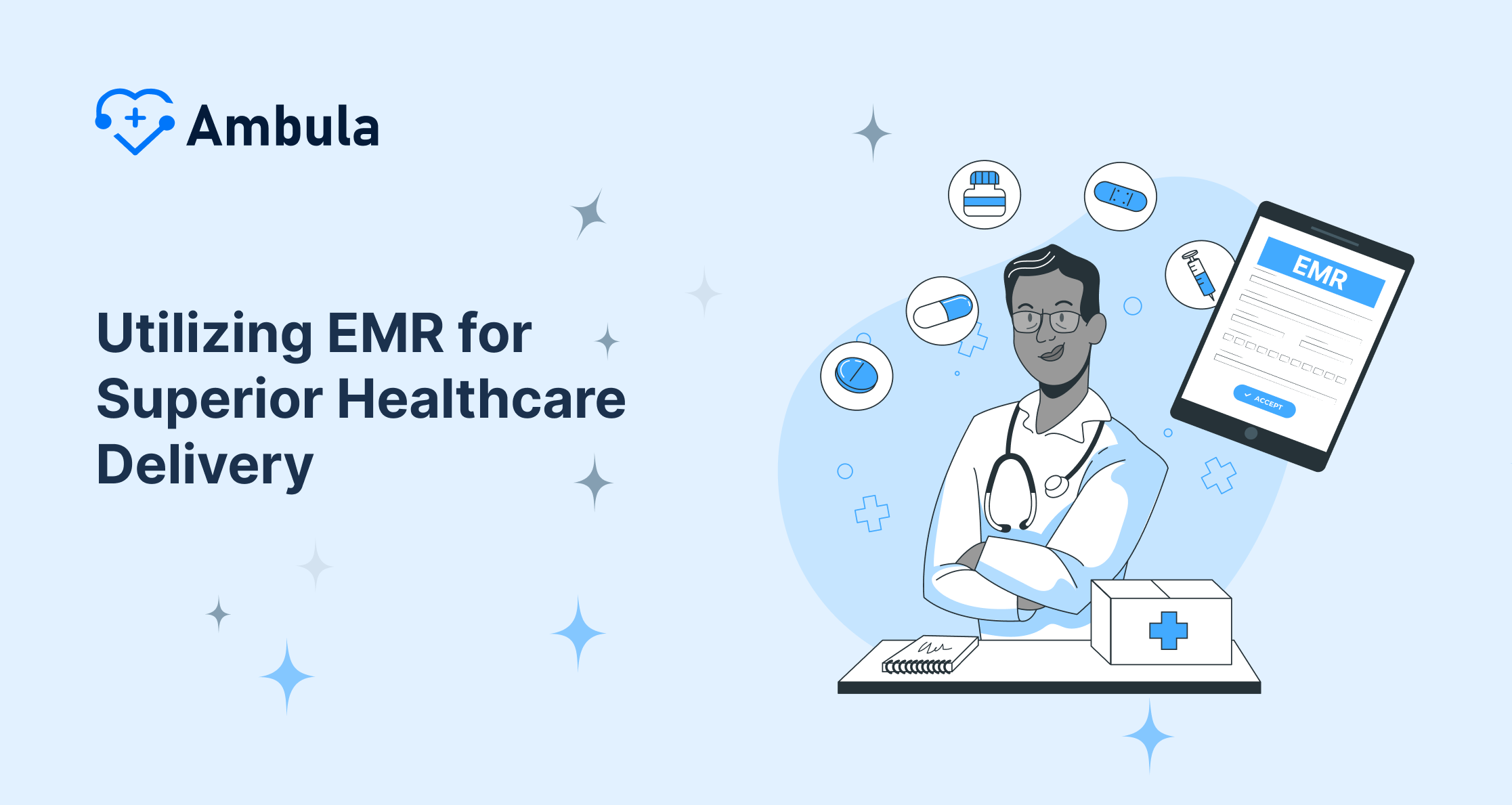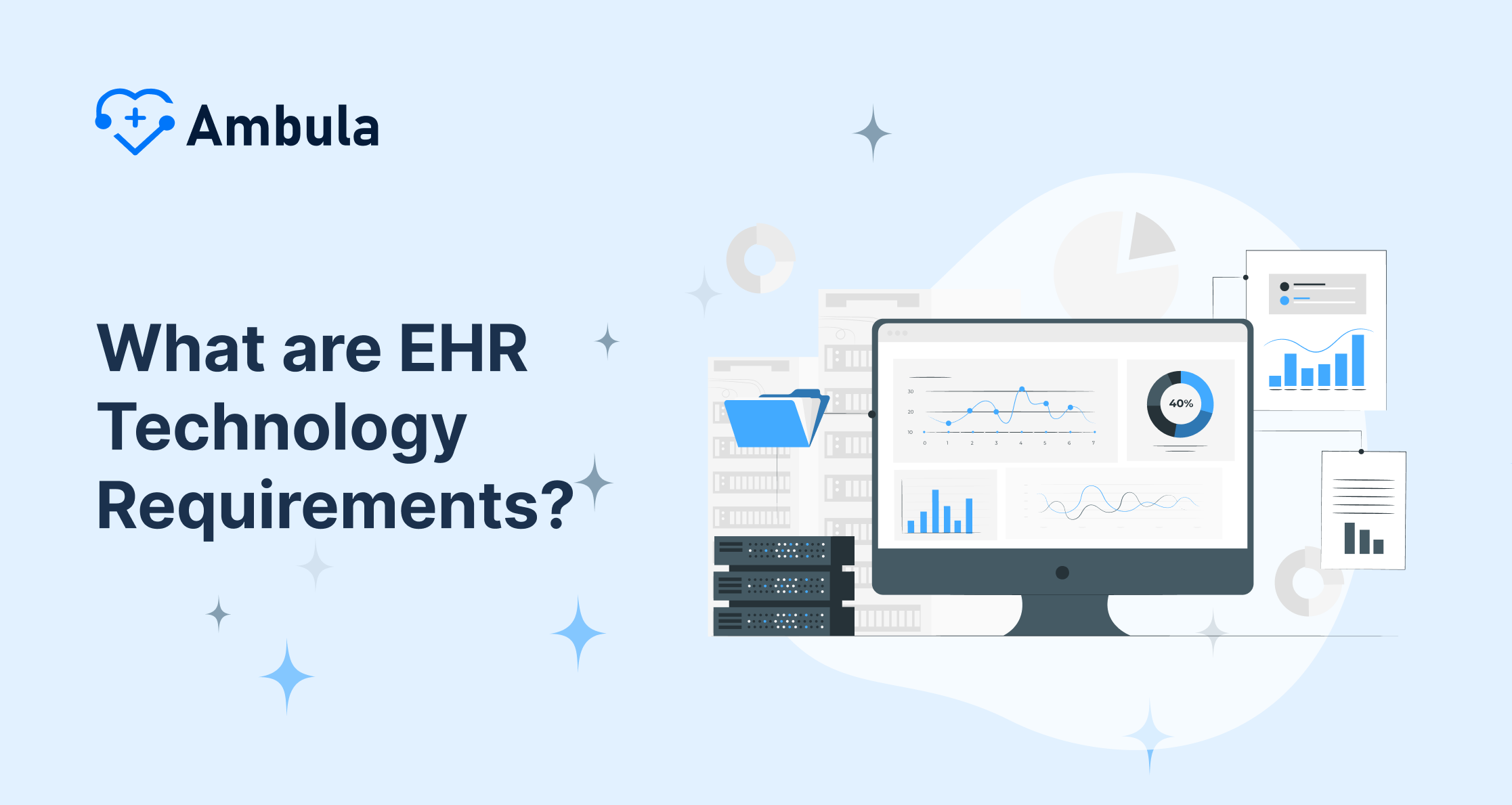The shift from paper records to EMRs is reshaping healthcare. EMRs transcend being mere digital versions of paper charts; they’re comprehensive, interactive systems that store patient data efficiently.
According to the Office of the National Coordinator for Health Information Technology, by 2019, 89% of office-based physicians had implemented EMR/EHR systems. This surge towards digital records is part of a broader movement embracing technology’s role in medicine, ensuring that healthcare delivery is efficient and up-to-date.
Switching to EMR could reshape your practice, freeing up time managing paperwork. This transition is streamlined clinic management, making record-keeping a dynamic and integrative part of patient care. For healthcare professionals looking to optimize clinical performance and focus on patients, adopting EMR is a step towards a more responsive and patient-centered practice.
Transitioning from paper to an EMR system isn’t something you do alone. That’s why we’re here to help. Scroll down to learn about the various benefits of cloud-based EMR software and how to transition from paper to EMR.
Firstly, we know the decision to transition from paper to an EMR system can feel like a big one, but it doesn’t have to be overwhelming. Secondly, it’s very important for medical practices to stay up-to-date with the latest technology to provide high-quality, efficient patient care.
Check out these articles after you’re done
How do you transition from paper to electronic health records?
Transitioning from paper to electronic health records (EHR) involves a systematic process. The first step is assessing current records and workflows to identify what needs digitization and how the EHR system will fit in.
Next, a detailed plan is developed, selecting an appropriate EHR system and outlining the timeline, resources, and staff roles. The execution phase involves digitizing paper records by scanning documents and inputting data, with quality assurance checks to ensure accuracy.
Training staff is critical, covering how to use the EHR system for entering and retrieving patient information, managing prescriptions, scheduling appointments, and generating reports. Ongoing support helps staff become proficient with the new system.
After implementation, paper records are temporarily kept to ensure the EHR system functions correctly and data is accurately transferred. Once verified, paper records are securely disposed of to protect patient privacy and comply with legal requirements.
Overall, the transition enhances efficiency and quality in healthcare delivery through careful planning, execution, and support.
Improving the Quality of Patient Care
Let’s hone in on accuracy. You know the challenges of deciphering handwritten notes and the risks they pose. EMRs eliminate that guesswork, offering clarity and reducing errors. They deliver real-time prompts that can alert you to potential medication interactions or critical lab values – crucial when every second counts.
Speaking of time, EMRs help you stay ahead. A study found that EMR systems can reduce the time spent on documentation by about 23%. That’s more time for you to engage with patients. Plus, they’re not just a passive data repository – they actively assist in decision-making with evidence-based tools integrated into the patient’s record.
On the frontier of patient care, EMRs are a vital ally. As practices aim for the gold standard in patient outcomes, these systems help maintain the continuity crucial for chronic disease management. They empower you to deliver personalized care plans, track progress, and adjust treatments with pinpoint precision.
Adopting EMRs shows you’re invested in offering top-tier care. It reflects a commitment to using innovative tools to provide the best outcomes – making your direct impact on your patients’ health stronger and more measurable. Keep it simple and accurate, and let EMRs support your invaluable work.
Cost Savings and Financial Incentives
Don’t forget the hidden costs of paper—like time. EMRs can save you significant time on record-keeping; as the ad goes, time is money. Research from the Medical Group Management Association has indicated that practices utilizing EMRs can save approximately $32,000 per year per provider just through enhanced efficiency and reduced paperwork.
Financial incentives are also part of the mix. Various healthcare reforms and programs offer monetary incentives to practices that demonstrate meaningful use of EMRs. These programs aren’t just carrots on sticks; they’re benchmarks that signify you’re meeting specific standards of efficiency and quality in patient care.
Moreover, a well-implemented EMR can help you reduce billing errors, meaning fewer rejected claims and improved cash flow. Accurate coding is streamlined with EMRs, so you capture all billable services, leading to rightful reimbursement without the hassle of constant back-and-forth.
The efficiency EMRs bring translates into better patient volume management. With more accurate scheduling and reduced no-show rates thanks to system reminders and efficient follow-up, you can optimize your practice’s capacity and, in turn, its revenue potential.
Easier Data Analytics and Reporting
Imagine being able to track health trends, monitor the quality of care, and pinpoint areas for improvement—all with a few keystrokes. EMRs compile vast amounts of data, making it simpler to generate reports that once took hours to compile manually. For instance, the Centers for Medicare & Medicaid Services (CMS) reported that EMRs have substantially streamlined the reporting process for clinical quality measures, a task that can directly affect reimbursement rates.
With the transition to EMRs, you’re not just collecting data; you’re curating it. These sophisticated systems facilitate real-time analytics, giving insights that can transform how you manage your practice. For example, with integrated analytics, you can quickly assess the effectiveness of treatment plans and adjust as necessary, ensuring that patients are always receiving the best possible care.
When it comes to public health and research, EMRs are instrumental. They make it feasible to contribute anonymized data to large-scale studies, increasing the breadth of medical knowledge. You’re part of a bigger picture, helping to identify public health trends and impact future healthcare policies.
Environmental Impact and Sustainability
Opting for Electronic Medical Records (EMRs) is a smart move for your practice and a positive step for the environment. Did you know that the healthcare industry is one of the largest consumers of paper, which profoundly impacts forests and the broader ecosystem? By transitioning to EMR, you’re helping to reduce the need for paper, directly contributing to the conservation of natural resources.
It’s about more than just cutting down on paper use. Consider the environmental cost of ink, the energy required for printing, and the physical space taken up by filing cabinets. EMRs eliminate these demands, lessening your carbon footprint. The positive ripple effect you create extends from shrinking waste in landfills to decreasing your practice’s overall energy consumption.
One might underestimate one practice’s impact, but imagine the collective effect when healthcare systems worldwide make this shift. Together, you’re not just improving healthcare delivery; you’re part of a global movement towards a more sustainable future.
Incorporating EMRs into your practice showcases a commitment to environmental stewardship, demonstrating to patients and the community that you value sustainability. This choice not only enhances the efficiency of patient care but also aligns with a greener, more responsible approach to healthcare.
Ambula EMR is here for you
You have many options if you’re in the market for a web-based EMR. But if you’re not exactly sure which one is best for you, Ambula may be just what you’re looking for. Effective and not costly, Ambula offers you top EMR performance.
Therefore, expect a simple workflow, a user-friendly platform, and more. This improves your patient care and workflow efficiency effortlessly. And we’re here to inform you about your smooth journey towards success.
Finally, if you’re struggling to replace paper charts with EMRs, or if you’re just getting started and want to know a starting point, we hope this basic guide will help. The ultimate goal should be to facilitate a seamless transition from paper to EMR documentation that is easier for everyone.
To learn more about the process of transitioning from paper to EMR and everything regarding this subject, reach out to the ambula healthcare team at: (818) 308-4108. And now, are you still wondering about paper charting vs electronic charting: which one is better?





